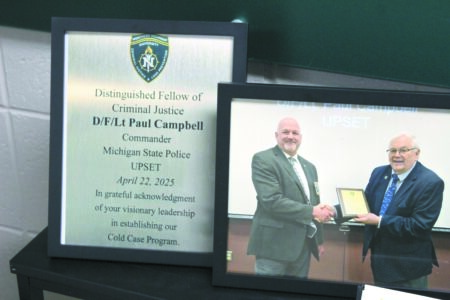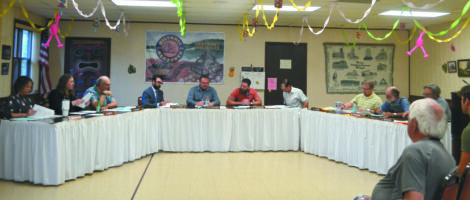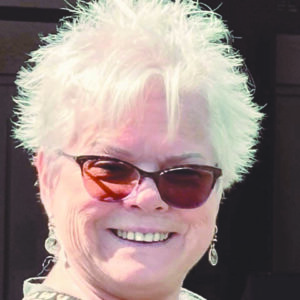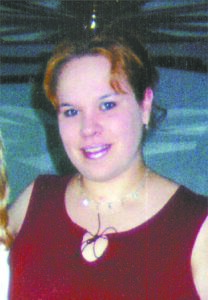Challenges of solving cold cases
From NMU’s cold case program
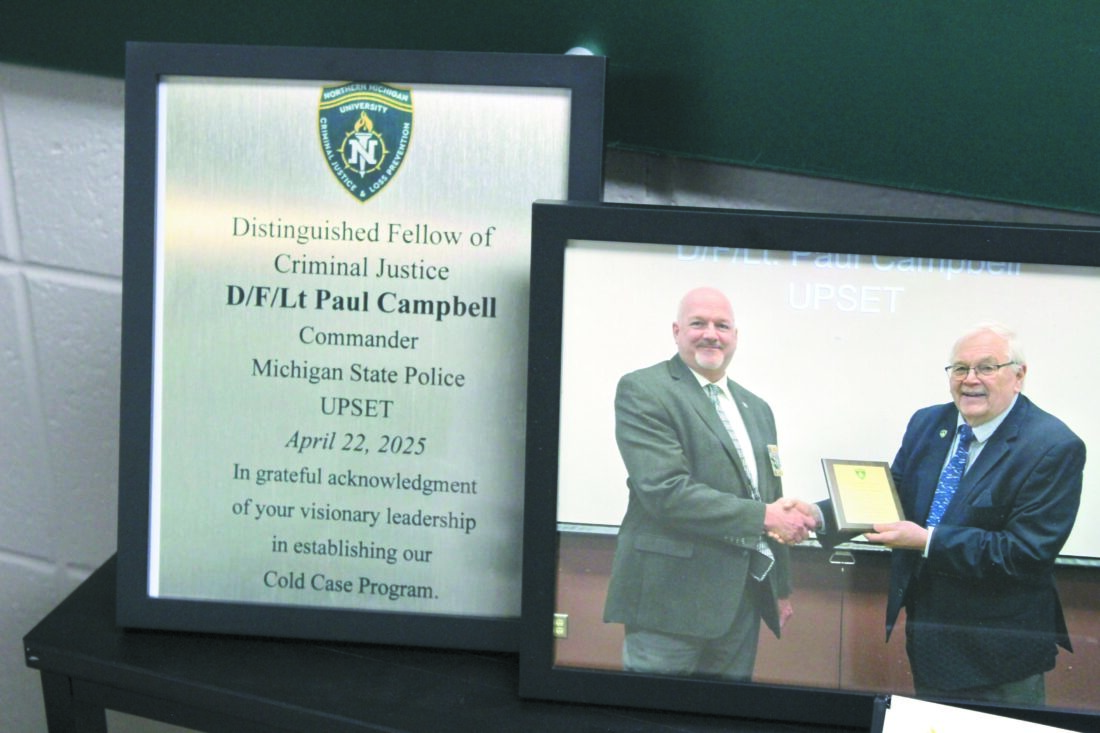
A recognition award given to Paul Campbell, left, for the founding and vision of the Cold Case program at Northern Michigan University. Presenting the award in April is Criminal Justice Department Head Robert Hanson. (Journal photo by Antonio Anderson)
MARQUETTE – Earlier this month, Northern Michigan University helped to solve a 39-year-old cold case from 1986, with its Criminal Justice Department’s cold case program.
The cold case program has been in operation since 2022 and has just solved its first cold case this month. It is no easy feat to accomplish this endeavor and many challenges face investigators who decide to take these cases on.
“Police and local agencies have limited resources,” said instructor Christopher MacMaster. “They need to handle what comes in the door. The time, effort and resources needed to look at these cold cases is just not there. They just don’t have those resources available.”
The Criminal Justice Department typically looks at one cold case a semester, but has just recently expanded it to two. The program is not allowed to analyze actual evidence of the case so they use pictures and paper work. One of the main challenges with working on a cold case is how dated they are, most of the time all of the paper evidence and reports are held in boxes, making the first challenge to digitize them and adapt them to modern technology and then to utilize more modern techniques to make headway.
“Regarding the case we solved, when the case happened the DNA was not in existence in terms of investigative purposes. As time went along, state police did do follow up work on this case … on the DNA and were able to clear the suspects in 2010. But at that point in 2010, forensic investigative genetic genealogy was not in play and did not exist. So all investigative leads were exhausted.”
Eventually when the case was assigned to the NMU group, they used forensic investigative genetic genealogy to solve the case.
“In every case, we are working on we are moving that case forward,” said MacMaster. “We are continuing to make improvements to help state police work on these cases.”
Twenty years ago, 75% of all sexual assault and homicide cases could be solved due to the victims usually knowing the perpetrator, but in recent years, the percentage has changed to 60% due to growing stranger-on-stranger violence, said Criminal Justice Department Head Robert Hanson.
“There is a reason why they are cold,” said Hanson. “There has to be something to work with.”
One of the major breakthroughs for cold cases are the tips and help received from the public but sometimes it takes a lengthy period to receive a strong enough lead.
“Thats the hard part,” said Hanson.
Antonio Anderson can be reached at 906-228-2500, ext. 550. His email address is aanderson@miningjournal.net.

